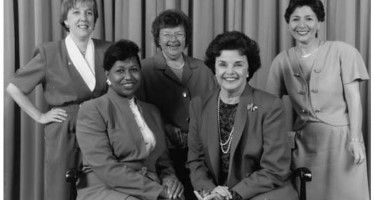Obesity rates flout L.A. fast food freeze
 Faced with damning independent assessments seven years on, a groundbreaking Los Angeles ordinance designed to fight so-called “food deserts” has been overwhelmed by criticism that transcends political lines. The USDA has defined food deserts as “urban neighborhoods and rural towns without ready access to fresh, healthy and affordable food.”
Faced with damning independent assessments seven years on, a groundbreaking Los Angeles ordinance designed to fight so-called “food deserts” has been overwhelmed by criticism that transcends political lines. The USDA has defined food deserts as “urban neighborhoods and rural towns without ready access to fresh, healthy and affordable food.”
In 2008, the Los Angeles City Council voted unanimously to freeze new fast food franchises. But as the Los Angeles Times reported, the ban’s imprecise language allowed “fast casual” outlets to flourish while failing to prevent new franchises from popping up anyway:
“The ban, supporters say, was meant to be a stop-gap measure to buy time as officials crafted initiatives to lure the sort of restaurants that area residents want. But when Gov. Jerry Brown dissolved redevelopment agencies in 2012, the city lost one of its best tools for enticing developers to invest in blighted communities. Without the leverage of tax incentives and other city support, attracting new restaurants is tough, city officials and business leaders say.”
Harsh findings
At first, the unprecedented effort to affect municipal diets had shown some gains. Four years after the moratorium, The New York Times reported that “no new stand-alone fast-food establishments have opened in the area,” while, instead, south L.A. saw its “first new supermarket in roughly a decade”:
“A handful of much smaller cities have enacted similar regulations for primarily aesthetic reasons, but Los Angeles, officials say, is the first to do so as part of a public health effort. The regulations, which the City Council passed unanimously last month, are meant to encourage healthier neighborhood dining options. Supporters envision more sit-down restaurants, produce-filled grocery stores and takeout meals that center on salad rather than fries.”
But a RAND Corporation study released in March revealed that, whatever its impact on businesses, the fast food moratorium failed to curb obesity levels. Investigating a five-year period of eating patterns, the study found that the City Council had little to show for its efforts. Although obesity and overweight rates were impacted by “a drop in soft drink consumption since 2007,” the authors concluded, “that drop is of similar magnitude in all areas.”
“In fact, obesity rates in the area had grown at a faster clip than elsewhere in the city,” the Atlantic noted. “As NBC News reported, the percentage of people in South Los Angeles who were overweight or obese in 2007 was 63 percent. By 2011, that figure was 75 percent.”
What’s more, the study also suggested that the affected restaurants even managed to squeeze in a few more franchises by exploiting a simple loophole in the new regulations. “Over the study period,” the New Orleans Times-Picayune observed, “the rate of new fast-food restaurants that opened in south Los Angeles in that period was ‘no different’ than in other parts of the county, in part, because in the affected area they skirted the ban by opening in shared spaces instead of ‘free-standing’ locations.”
Finally, according to the Los Angeles Times’ own analysis, what new restaurants did move into the South L.A. area clustered overwhelmingly around the University of Southern California campus:
“From 2009 through 2014, the roughly 32-square mile area covered by the ban gained 86 restaurants, a Times analysis of Los Angeles County Department of Health records shows. More than half of those new locations, however, were on or near USC.”
Strange bedfellows
Free-market and small-government advocates swiftly hailed the study, which seemed to confirm the criticisms they raised at the ban’s inception.
 More notably, however, grassroots health and dietary activists have not done much to defend the ineffective law. “Nonprofit leaders were not surprised by the findings,” according to Southern California Public Radio. “They say the obesity epidemic is complex, and that solving it will require more than a ban on new fast food restaurants.”
More notably, however, grassroots health and dietary activists have not done much to defend the ineffective law. “Nonprofit leaders were not surprised by the findings,” according to Southern California Public Radio. “They say the obesity epidemic is complex, and that solving it will require more than a ban on new fast food restaurants.”
“The answer is long-term, patient committed work,” said Neelam Sharma, director of a nonprofit that makes produce readily available in South L.A. “Like engaging with people. That isn’t sexy and doesn’t get immediate results.”
Related Articles
CA 'Jobs Gap' Spikes Upward
MARCH 11, 2011 BY JOHN SEILER New unemployment figures released March 10 show that California’s Jobs Gap has jumped to
Boxer exit begins CA youth shift in Congress
Girls may run the world, as in the Beyonce song, but women run California’s congressional delegation. More specifically, older Democratic women
Proposed bill seeks to recoup costs of special elections
An assemblyman will soon introduce legislation aimed at curbing the cost to taxpayers when a legislator retires from their position early, forcing




